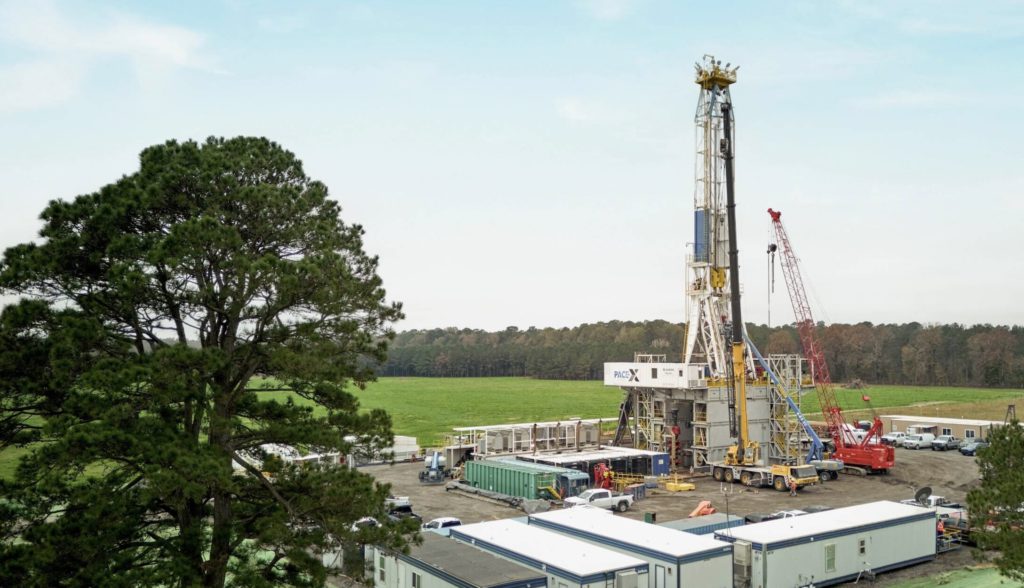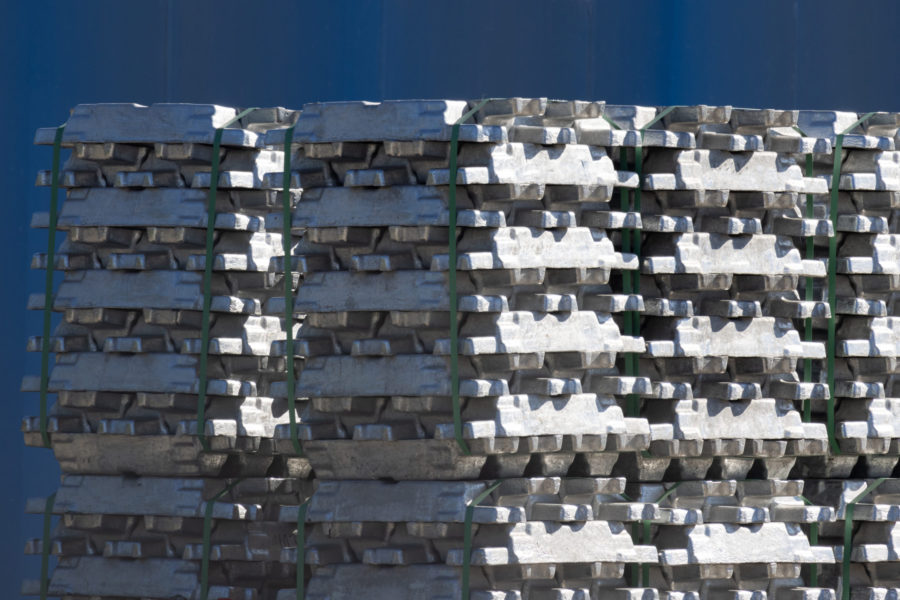Big Oil seizes lithium opportunities

Mining companies could benefit in cash and technology as major fossil fuel companies such as ExxonMobil (NYSE: XOM), Occidental Petroleum (NYSE: OXY) and Equinor (NYSE: EQNR) invest in lithium, a potential lifeline amid the battery metal’s low prices and oversupply.
ExxonMobil, which has produced some lithium in a pilot project, signed a preliminary agreement last month to send lithium to South Korea-based SK On, a battery maker that’s building plants to supply Hyundai and Ford in the United States. That followed the oil giant’s $100 million purchase of drilling rights on 485 sq. km of lithium brine assets in Arkansas’ Smackover Formation from Galvanic Energy.
Also in June, Occidental Petroleum said it’s forming a joint venture with a unit of Warren Buffett’s Berkshire Hathaway (NYSE: BRK.B) to produce battery-grade lithium from the brine of 10 geothermal power plants in California. It’s begun feasibility testing.
Chevron (NYSE: CVX) says it’s exploring lithium extraction, and Reuters reported the third-largest petroleum company by market value was speaking with International Battery Metals (CSE: IBAT; US-OTC: IBATF) about licensing brine technology.
Norwegian state oil company Equinor said in May it could pay as much as $133 million for a 45% stake in Standard Lithium’s (TSXV: SLI) projects in Arkansas and Texas. Standard started a commercial-scale demonstration plant in April. Vulcan Energy Resources (ASX: VUL) told The Northern Miner by email it has oil majors, but wouldn’t say which ones, investing in its €1.3 billion Zero Carbon lithium project in Germany.
‘Makes sense’
“The move into lithium makes a lot of sense for these large international energy companies,” Rhidoy Rashid, a senior associate at London-based data and analysis firm Energy Aspects said by email. “Unlike some other niche metals, lithium is relatively abundant, so the resource needed to match rising demand for batteries is there, it just needs to be efficiently extracted. The expertise these companies can bring may also help to ramp up lithium supplies from areas where it was previously uneconomic to extract the metal.”
Oil companies are investing exclusively in brine projects (as opposed to hard rock) that may use direct lithium extraction (DLE), which resembles pumping crude in some aspects. They’re tapping their own core capabilities in subsurface exploration, drilling and chemical processing. They have much deeper pockets with market values that dwarf their mining cousins. Their diversification into green metals can help lift a mining sector that attracted stock market investors when the metal price was high but have since abandoned it.
“Oil companies offer the technology and skills need to identify, characterize and produce lithium-bearing brines from deep underground,” Terry Braun, president of North American operations for SRK Consulting, said by email. The firm has 45 offices globally and has operated in more than 150 countries.
“The challenge of economically extracting a marketable lithium product once the brine is at the surface is formidable,” Braun said. “Even with the technical expertise of most major oil companies.”
$1 billion move
ExxonMobil is aiming to supply enough of the battery metal to power 1 million vehicles by 2030. It has said a “material” part of its $20 billion budget for low-carbon projects through 2027 will be spent on lithium.
“It has to be over $1 billion if it is going to be material,” chairman and CEO Darren Woods said on an April 30 conference call. “We are looking at very large markets into the billions.”
Lithium brines are often found in depleted oil wells, like the Leduc field in Alberta where E3 Lithium (TSXV: ETL; US-OTC: EEMMF) is advancing its $2.5 billion Clearwater project on Canada’s largest resource of the battery metal. The project between Calgary and Edmonton could produce 32,250 tonnes a year of lithium hydroxide monohydrate over half a century, according to a prefeasibility study issued on June 26.
ExxonMobil’s Canadian subsidiary, Imperial Oil (TSX: IMO), has invested C$6.4 million for stock and warrants equal to 4.3% of E3.
There is only one commercial DLE operation so far outside of China after companies struggled to lower costs and improve technologies. Arcadium Lithium (NYSE: ALTM; ASX LTM) has been using DLE at its Hombre Muerto operations in Argentina since the 1990s. Most brine operators like Albemarle (NYSE: ALB) and SQM (NYSE: SQM) the world’s two largest lithium producers, use traditional evaporation ponds.
Pros and cons
However, DLE is gathering pace because it can produce lithium in hours or days vs months or years on a fraction of the land and process brines with lower lithium concentrations.
US Magnesium is using DLE from International Battery Metals for a project in Utah and CleanTech Lithium (AIM: CTL) started a DLE pilot plant in Chile. In Canada besides E3, Volt Lithium (TSXV: VLT), EMP Metals (CSE: EMPS; US-OTC: EMPPF) and LithiumBank Resources (TSXV: LBNK; US-OTC: LBNKF) have all started DLE testing.
These operations, which in E3’s case, would siphon lithium-laden water from the same wells that used to produce oil, then pump it back into the reservoirs after extracting the battery metal. Even permit requirements and the separation process using water and reinjecting it into wells are more akin to the oil industry than hard rock mining.
However, some experts have expressed concerns about the environmental impact of oil companies extracting lithium, likening the process to fracking because it injects liquid underground that could potentially enter water supplies. Marco Tedesco, a climate scientist at Columbia University, has said high water usage and potential pollution are linked to DLE. Some environmentalists have criticized oil companies for greenwashing their operations.
“It pains us to even cover a company like ExxonMobil, as its history in environmentalism is as filthy as the oil it drums up,” Scooter Doll at energy transition website Electrek wrote when the oil giant started lithium drilling. “While this is welcomed news to an extent, it’s not difficult to see the motive behind ExxonMobil’s expansion into lithium, and it sure as hell isn’t about saving the planet.”
Oversupply
While companies use long-term metal pricing to gauge project economics, the surge in oil major investing comes as battery-grade lithium carbonate has plunged to around a three-year low. It was $11,825 a tonne on Friday, down from $40,675 a year ago, according to The Wall St. Journal. It had been approaching $76,000 a tonne in January last year.
“The commercial scale economics for the majority of DLE projects are unknown at the present time,” SRK’s Braun said. “DLE technologies or other non-conventional metallurgical flow sheets present a technical risk that could negatively impact project economics and the ability of the mining company to pay the lender.”
A glut in lithium is expected to continue for close to a decade even as demand increases because of more electric vehicles hitting the market, analysts at FitchSolutions BMI said on a June 27 webcast. The oversupply will force scores of companies to adopt cost-saving technology like DLE and/or face takeover threats, they said.
“We expect no return to previous highs for lithium,” Sabrin Chowdhury, head of BMI commodities analysis, said from Singapore. “Prices will remain below the peaks of 2022 and 2023 for at least five to 10 years.”
Demand
Global lithium production increased 23% last year to 180,000 tonnes, according to Statista. Energy Aspects’ Rashid says oil major investments in lithium are key for the world to meet rising demand and climate-change fighting goals.
“It is crucial that lithium supplies are unlocked if the world is to keep pace with net zero ambitions,” the analyst told The Northern Miner. “We think global lithium production needs to almost triple by 2030 to keep up with the level of electric vehicle adoption required to maintain pace with decarbonization targets.”
The lower price has caused some producers such as Albemarle, which has both hard rock and brine operations, to slash costs and delay projects. That could expose some assets to M&A and provide more opportunities for oil companies to invest. Miners may seek out oil companies as their projects face funding and other headwinds.
Braun says success in DLE technology suits oil companies because of their resources for tests on brines from projects and their capacity to build large projects, starting with DLE pilot programs to assess economic feasibility.
“Oil companies invest significant capital and time to develop, test and deploy new technologies at commercial scale,” Braun said. “This is a strategic advantage over companies that have less capital or time to prove a commercial scale DLE application.”
With files by Henry Lazenby.
More News
{{ commodity.name }}
{{ post.title }}
{{ post.date }}



Comments